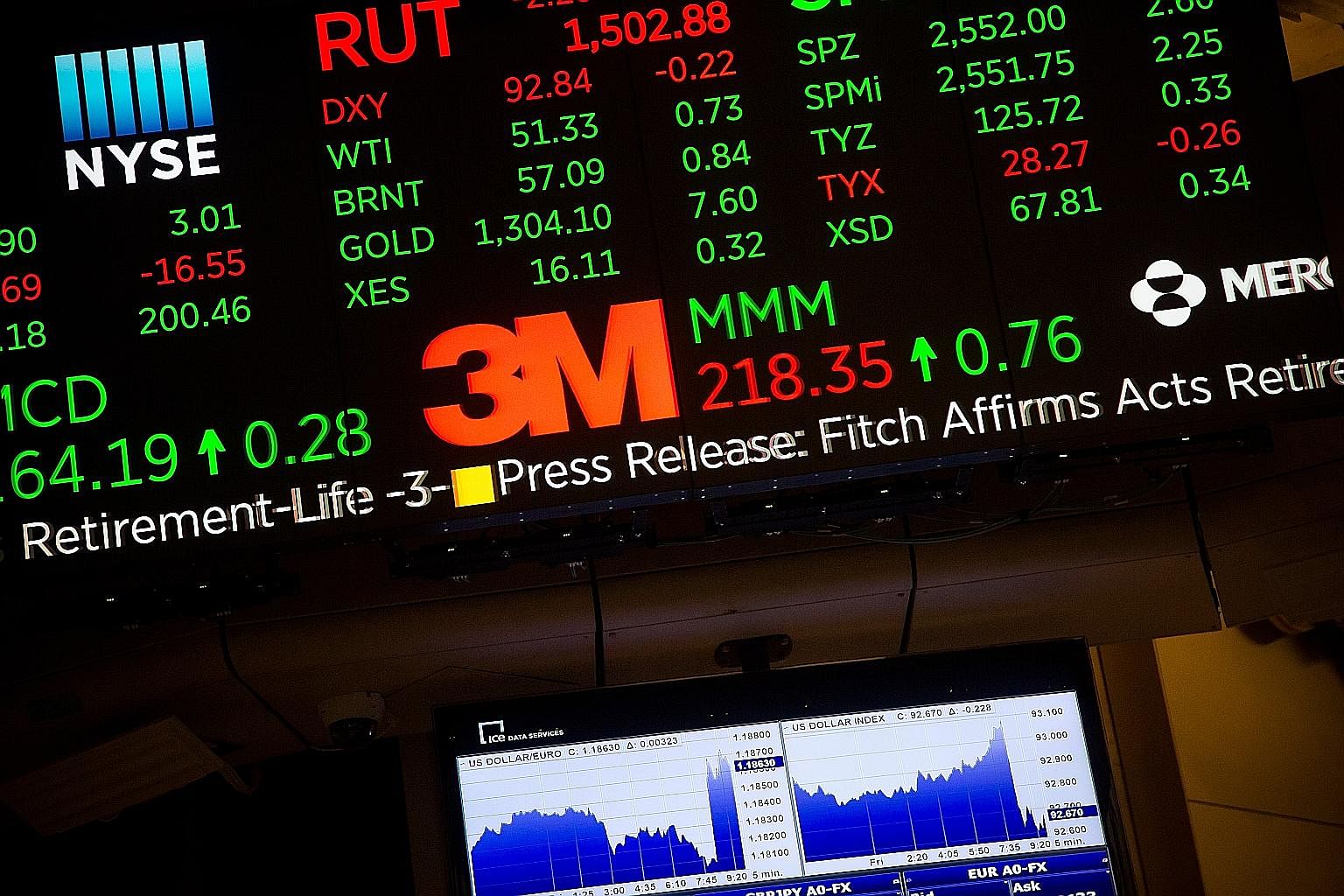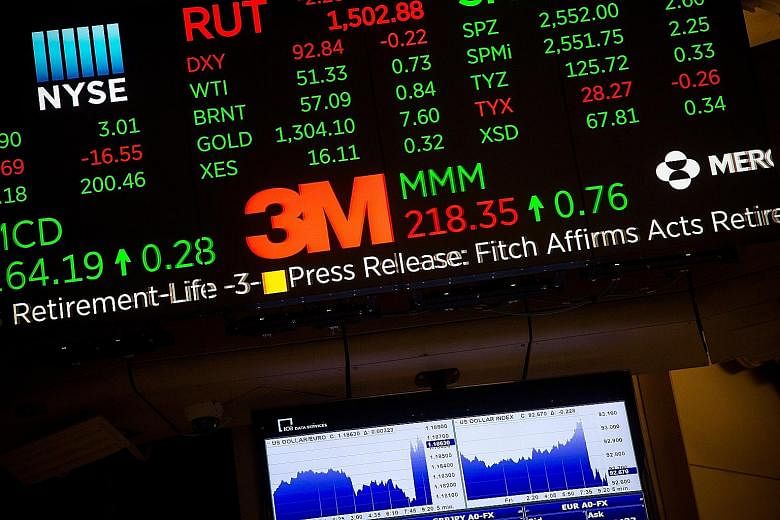Hardly a day goes by without Wall Street hitting a fresh record.
If you want to know why the market keeps going up, all you have to do is look at the survey of global fund managers released by American investment bank BofA Merrill Lynch last week.
A key finding was that almost half of the managers polled expect "above-trend growth and below-trend inflation". This is what economists dub the "Goldilocks" economy - conditions that are not too hot or too cold but just right.
A net 41 per cent of those surveyed also expect global growth to strengthen in the next 12 months. What is also interesting is that a net 45 per cent of them are "overweight" on equities. This is despite the oft-repeated observation that US stocks are looking expensive by comparison with recent history.
And reflecting their optimistic market outlook, they are also sitting on less cash. The Merrill survey noted that average cash balances among fund managers have fallen to 4.7 per cent of their assets - the lowest level in 21/2 years. Just for comparison, they held about 5.8 per cent of their assets in cash in October last year.
Yet it is not only in the United States where institutional investors are bullish on equities. Data from the Singapore Exchange shows that fund managers snapped up a net $405.6 million worth of shares here last month, compared with August, when they sold a net $252.4 million of shares.

In particular, they have a voracious appetite for banking stocks, which are regarded as proxies to the economy. So far this year, they have bought a net $2.44 billion worth of financial shares.
And it is not just the stock market that is doing well. Investors are displaying similar exuberance in other asset classes such as bonds, property and even cryptocurrencies like bitcoins.
Housing prices in the US, where a souring sub-prime mortgage market triggered the global financial crisis, have bounced back to above the levels just before the crisis 10 years ago.
Even in Singapore, where a slew of cooling measures has been put in place to put the lid on home prices, real estate developers are turning bullish again, going by the spate of collective sales of private residential properties this year.
Time and time again, market pundits have attributed the spike in asset prices to the abnormally low interest rates that have been in place since the global financial crisis erupted almost 10 years ago.
This is due to central banks in the US, Japan and the euro zone keeping short-term rates at close to zero to try to nurse their economies back to health.
Not only that. These central banks have also helped to depress long-term interest rates by buying an estimated US$11 trillion (S$15 trillion) of government bonds over the past 10 years, a practice dubbed "quantitative easing".
And because interest rates are so low, fund managers, desperate for higher yields, have become increasingly incautious - and this has propelled even the price of risky assets higher as money is ploughed into them.
Still, there may be some logic to the upswing in asset prices.
If fund managers are right in anticipating an improvement in the global economy over the next 12 months - as portrayed by the Merrill survey - this lessens the likelihood of equity prices suffering a major correction for now.
Such a conviction will only lure fund managers to take more risks in order to try and get a higher return for their clients - especially in emerging markets where returns are higher than in Europe or the US.
What is more, there is a strong likelihood that long-term interest rates will stay at around their historic low levels as stagnant wages and lower capital expenditure among companies result in a slowdown in demand for corporate loans.
This works to the advantage of risk-takers who can borrow cheaply over a long time period to fund their wagers in the market.
Still, despite the exuberance displayed by institutional investors for higher-risk assets such as stocks, some pundits have drawn unsavoury comparison between stock market conditions now and 30 years ago, when the Black Monday crash of October 1987 hit.
Now, like in 1987, the US is engaged in sabre-rattling with foreign foes, including Iran. Investors are also strongly encouraged to buy whenever the stock market displays a dip because of a belief that prices will rebound.
But like in 1987, many of the asset purchases are funded by cheap debt and one worry is that if companies are unable to service their borrowings because of a sudden hike in interest rates - or they are unable to roll-over their loans when they are due to be repaid - this may magnify losses among investors and trigger another financial crisis.
So a major concern among the fund managers in the Merrill survey is a "policy mistake from the US Fed or the European Central Bank" as they attempt to drain the liquidity that they poured into the financial system in recent years.
Then there is the concern that the trading strategies put in place to help investors limit their losses may ironically end up exacerbating any correction, just like in 1987. When the markets plunged on Oct 19, 1987, the selling of more and more index futures turned a rout into carnage.
While the scale of Black Monday's calamitous plunge, when stock prices on Wall Street slid 23 per cent in a single day, may never be replicated - circuit-breakers are in place to halt trading in times of extreme declines - some have warned about the dangers lurking in modern hedging strategies.
Questions have also been asked about how exchange-traded funds (ETFs), which gather baskets of stocks tracking widely-held indexes such as the S&P 500, would behave during a bout of fierce selling given that they control over US$4 trillion worth of assets.
Dr Shane Oliver, the head of investment strategy of Australian fund management firm AMP Capital, says this means we can't rule out another crash like in 1987 at some point, in the light of the growth of high-frequency trading ETFs and investment programmes driven by artificial intelligence.
But he argues that investors have to accept crashes and bear markets as part and parcel of share investing and that this is ultimately the price they have to pay in order to get higher long-term returns.
I concur. Bears and busts are part and parcel of the stock market, as are bulls and booms. When it comes to investments, it is best to watch your every step.
• Goh Eng Yeow has a new book, Market Smart: How To Grow Your Wealth In An Uncertain World.


